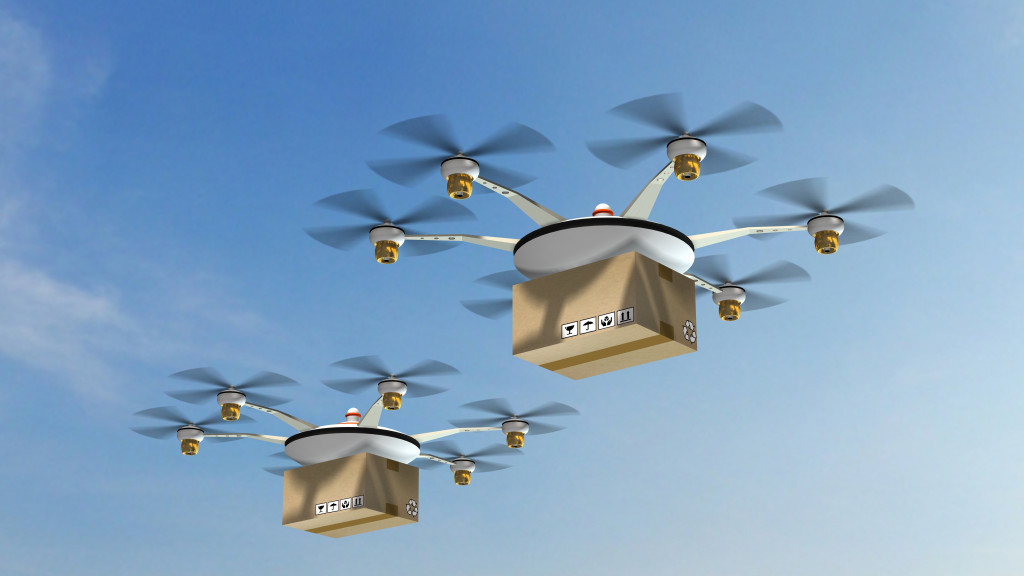The logistics industry in the United States is a $1.5 trillion industry that employs over 15 million people. It is responsible for the movement of goods across the country and has grown steadily for years. However, the industry is facing some challenges. One of the biggest challenges is last-mile delivery. Last-mile delivery is the final step in the delivery process, and it takes up a fraction of the industry’s worth. It was valued at around $108 billion last year.
The problem with last-mile delivery is that it’s pretty challenging. The challenge is that there are a lot of different addresses, and each address presents its unique challenges. So, for example, some addresses may be difficult to find, or there may be stairs or other obstacles that make delivery difficult.
Robots and artificial intelligence (AI) are helping to solve these challenges. For example, robots can be used to navigate rugged terrain, and AI can be used to optimize delivery routes. This is helping to make last-mile delivery more efficient and cost-effective. Here’s how both of these technologies are changing the world of delivery.
Management Systems
One of the most significant changes that robots and AI are bringing to last-mile delivery is the development of new management systems. These systems are designed to optimize delivery routes and improve efficiency.
One example of a new management system is an AI-powered route planning system. This type of system can consider several factors, such as traffic, weather, and construction. This information can be used to plan the most efficient route possible.
Another example of a management system is a robotic warehouse system. This type of system uses robots to pick up and sort packages. The packages are then delivered to the appropriate address by a human driver. This system is designed to improve efficiency and accuracy in the warehouse.
Lastly, there’s a management system that’s making a difference when it comes to cost-efficiency. Fuel consumption management systems are designed to optimize fuel usage for delivery vehicles. This can help reduce the cost of last-mile delivery by a significant amount.
Delivery Robots

One of the most visible changes that robots and AI are bringing to last-mile delivery is the development of delivery robots. These robots are designed to navigate difficult terrain and deliver packages directly to the customer’s doorstep.
Many different types of delivery robots are being developed. One type of robot is a self-driving car. This type of robot can be used to navigate city streets and deliver packages directly to the customer’s house. Another type of robot is a drone. Drones can be used to deliver packages over long distances without going through city streets. They can also be used in areas where there is no road infrastructure.
Delivery robots present several advantages over traditional methods of delivering goods. For example, they can navigate difficult terrain and make multiple deliveries in a single trip. This helps to improve efficiency and reduce costs. In addition, delivery robots can be used to deliver goods 24 hours a day, which is not possible with traditional methods.
Safety and Security
One of the concerns that have been raised about delivery robots is safety and security. About 210 million parcels are stolen every year from Amazon, and there have been instances where robots have been stolen or damaged. In addition, there is the concern that robots may not be able to navigate safely around obstacles.
Many companies are developing safety and security features for their robots to address these concerns. For example, some robots have sensors that allow them to avoid obstacles. Others have cameras that will enable them to be monitored remotely. In addition, some robots are equipped with facial recognition software that allows them to identify the customer. This helps to ensure that the package is delivered to the right person.
Analyzing Routes
It’s crucial to analyze delivery routes to make last-mile delivery more efficient. This can be done with the help of robots and AI.
One way to do this is by using drones to map out delivery routes. Drones can be used to take pictures of the route and identify any potential obstacles. This information can then be used to plan the most efficient route possible.
Another way to analyze delivery routes is with the help of data analytics. Data analytics can be used to identify patterns in delivery routes. This information can be used to optimize the route and make it more efficient. These methods can certainly help reduce the number of times drivers have to navigate around traffic accidents.
As you can see, robots and AI are changing the world of last-mile delivery. These technologies are making it possible to manage deliveries more efficiently and effectively. This is good news for both businesses and consumers. Businesses will be able to save money on delivery costs, and consumers will be able to receive their orders more quickly and reliably.

